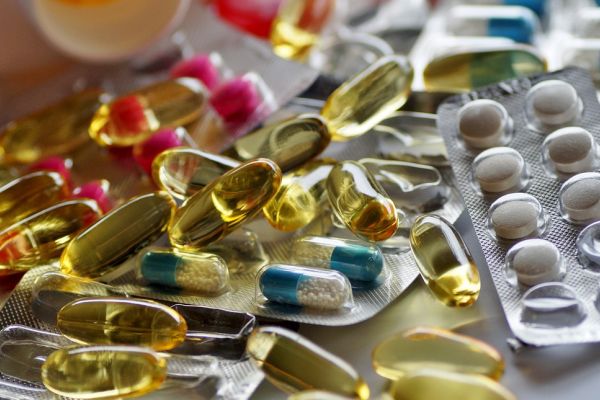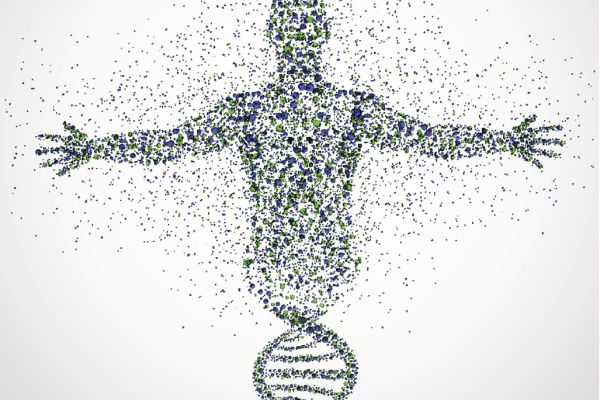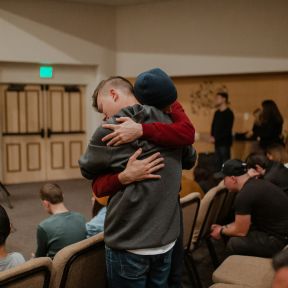Treatment of Addiction
Every day, people embark on the road to recovery from addiction. Some choose—or are remanded by law enforcement—to do it with the help of some type of clinical service, some prefer the support of peers, and many do it on their own. Just as there is no one pathway into addiction, there is no one pathway out of it. Residential, inpatient programs featuring stays of a month or more may be the best-known type of care—“rehab” facilities are often in the news when a celebrity discloses an addiction problem—but it is not the most common type of care nor necessarily the most effective.
Whatever form it takes, successful treatment reverses the changes in brain circuitry that make substance use hard to control. Yet many factors other than biology must be addressed for treatment to be successful: a person’s emotional state, quality of relationships, stress reactivity, coping skills, educational and job opportunities, just to name a few. Environments matter, and so does the cultivation of alternative sources of reward and purpose. Jobs, housing, and friends aid remission.
Because stopping substance use typically ushers in a period of acute and often all-consuming distress that subsides in days or weeks, treatment is generally divided into to two distinct periods. Care during the acute phase addresses the physiologic effects of stopping a biologically active chemical. The goal is to eliminate the substance from the body and manage the physical discomfort, drug cravings, and psychological distress that occur in response to the abrupt cessation of a substance the body has depended on and adapted to.
But detoxifying the body and managing withdrawal are just the start; they stabilize the body. Removing the drug does not instill understanding of the underlying causes of the addiction. Nor does it repair damage done, provide needed psychological and behavioral skills, or furnish a goal in life, something necessary for creating feelings of reward that the substance formerly provided. Nor does it solve the problem that made use of a psychoactive substance so attractive in the first place. What must follow “detox” is treatment aimed at rebuilding a person and a life. That process can take months or years, and many types of help and supportive resources can be accessed all along the way.
Because much is at stake in addiction treatment, a large industry has arisen to meet the needs of often-desperate substance users and their families; it is extremely important to select care options that meet scientific standards and are supported by evidence.
On This Page
- Can drug addiction be treated?
- How effective is drug addiction treatment?
- Are interventions helpful to get people into treatment?
- Is residential/inpatient treatment always necessary?
- What are the options for drug addiction treatment?
- What are the components of a good addiction treatment program?
- What happens during treatment?
- What makes treatment effective?
- What is detox?
- What is rehab?
- How long does addiction treatment last?
- How do I find help?
Drug addiction is a curable condition, although the process of recovery is rarely easy and seldom proceeds in a straight line. Relapse is common and should be considered a part of the treatment and recovery process. Whether addiction is addressed in a residential program, an outpatient program, a doctor’s office, online, with any kind of support service or group, or on one’s own, with or without the assistance of medication—and often, many modalities are used—there are a number of elements essential to effective care.
One of the most fundamental is assessment and treatment of any mental health conditions that underlie substance use (often called dual diagnosis). Evidence suggests that the majority of those with substance use disorders have a contributing psychiatric disorder, whether depression, anxiety, attention deficit hyperactivity disorder (ADHD), or other condition. Good treatment is tailored to the individual needs of each person.
Nevertheless, only a small percentage of those with substance use problems ever seek treatment at all. Research spotlights several significant barriers to treatment. One is that many treatment programs require as a condition of entry a commitment to abstinence— yet that commitment is required before a person can even imagine life without the substance or access the support for doing so. Another is that those caught up in addiction frequently feel too much shame about their problem to share their struggles with anyone else. Yet another is a history of having tried to stop many times before and failed, which can lead a person to believe they don’t have what it takes to succeed in controlling their problem.
How effective treatment is depends to a considerable extent on how recovery is defined. Many programs define effectiveness only in terms of complete abstinence. Increasingly, that is seen as an outdated metric. Experts are now rethinking how to measure addiction, and many believe there are several markers of recovery—the ability to control substance use, general well-being, and functioning as a productive member of society.
Data indicate that 85 percent of people who struggle with addiction do not seek help. Among those who do, more than 90 percent “fail” within a single year—if the sole measure is abstinence.
Yet most people are eventually successful in overcoming addiction, although doing so can take many tries. It is typically a process, and many people access some kind of help—often, differing types of help at different times—along the way, whether a clinical inpatient or outpatient program, individual or group psychotherapy, a mutual-support group, a coach, a job-training program, or other.
One principle of contemporary understanding of addiction is that relapse is not a treatment failure—it’s a signal to adjust care, whether re-upping the intensity of treatment or changing the type of treatment. Among the fundamental factors of success in addiction recovery is a person’s belief in their ability to succeed; an effective treatment program is one that helps people build their sense of self-efficacy.
In the addiction world, "intervention" is a technique of confrontation intended to drive a person into treatment for addiction. Typically, a family member or someone close to the substance user arranges a surprise gathering of family and friends, along with a representative of an addiction treatment facility or program, to persuade the user to immediately enter treatment—or risk losing the support of and contact with those near and dear. Those who promote interventions contend that only such a dramatic event can pierce the denial of harmful consequences that is presumed to be perpetuating the addiction. The drama inherent in interventions has made them fodder for reality television.
In real life, however well-meaning they are, interventions are humiliating and often backfire. Even if they succeed in getting people into treatment, data show that they don’t ensure that people stay in treatment; one major problem is that they nullify the internal motivation need to quit.
In his 2021 memoir of loss and addiction, Beautiful Things, Hunter Biden describes the unintended effects of an intervention staged on his behalf. Invited to his parents’ house for dinner, he “walked into the house, bright and homey as always, and immediately saw my three daughters,” all of whom were attending schools in different cities. “I knew then that something was up…. I saw my mom and dad, smiling awkwardly, looking pained. A moment later, I spotted two counselors from a rehab center that I’d once gone to in Pennsylvania. That was it. ‘Not a chance,’ I said. My dad suddenly looked terrified. ‘I don’t know what else to do,’ he cried out. ‘I’m so scared. Tell me what to do.’ My flat reply: ‘Not f***ing this.’ It was awful. I was awful. It devolved from there into a charged, agonized debacle…. Everybody was crying, which only made me angrier. ‘Don’t ever ambush me like this again,’ I told my dad, and bolted out of the house.”
Addiction care can be obtained many ways. Residential treatment at an addiction rehabilitation facility or medical inpatient care is rarely necessary, and only a small percentage of substance users seek out or require such treatment. When chosen, inpatient/residential care is most often utilized for the acute phase of recovery only, to see people through withdrawal, a period that usually lasts a week to a month and, while it is uncomfortable for all, poses real dangers to a few.
The important elements of care provided by residential treatment are generally also available through outpatient programs, which vary in intensity of services. Intensive outpatient programs (IOPs) are typically based in a hospital or clinic and provide therapy and other services several hours a day, allowing patients to live at home and attend school or work part-time. Partial hospitalization programs, sometimes known as day treatment, and also typically hospital-based, provide day-long treatment programming to patients living at home. It is common for patients to start treatment in a partial hospitalization program and, after a few weeks, take a step down in level of care to an IOP.
Residential treatment facilities usually offer a number of amenities in a non-institutional, home-like setting. Here's what quality residential treatment programs typically offer:
• 24-hour management of withdrawal
• management of medication
• built-in structure and schedule
• individual psychotherapy
• group therapy
• family therapy
• addiction education
• skills training
• educational support or liaison with credentialed educational programs
• nutritional support
• exercise and recreational activities
• built-in community and peer support
• aftercare programs or support.
Residential care removes people from problematic environments, maladaptive lifestyles, and the inducements to drug use they hold. That can be both a plus and a minus. While it can minimize the immediate temptation to use a substance, it doesn’t automatically confer skills needed for managing recovery under the pressures of everyday life. Yet the temporary escape gives people an opportunity to focus on recovery 24/7, in a supportive environment.
Residential care may be of most value to those with an unstable or unhealthy home environment. Patients can be readily observed and monitored, an advantage for the early stages of medication management, if used. And life in residential treatment tends to be fairly regimented, in contrast to the often-chaotic life of active addiction. Residential treatment is usually significantly more expensive than outpatient treatment, and depending on location, and many variables in individual plans, may or may not be eligible for insurance coverage.
Outpatient treatment enables patients to practice recovery skills immediately in a real-life setting. Depending on the level of treatment selected, it can allow patients to maintain work or school commitments. And it facilitates involvement of the family in care, a factor known to enhance recovery.
In addition to residential treatment and partial hospitalization, there are many treatment possibilities for addiction. It is difficult to know what type of addiction services a person needs—or will work best—and how to begin to navigate the often-confusing world of addiction treatment. It would be far less daunting to select an addiction treatment if there were uniform and reliable data on the success rates of various programs, but the collection of such information is still in its early stages. It is also one of the facts of addiction recovery that differing levels of care and support may be necessary or desirable at different points in the recovery process.
Halfway houses are a step down from inpatient or residential care. They offer no clinical services; what they do provide is the support of others actively recovering from addiction, and they help individuals avoid the situations linked to drug use and the triggers for it. Many halfway-house residents are enrolled in outpatient treatment programs. All undergo drug testing as a condition of residence and are usually required to attend peer-support programs both within the house and in the community, such as AA or NA meetings.
Sober living is a type of residence that provides no clinical services but supports recovery by maintaining a substance-free atmosphere for a small number of individuals as a way to prevent relapse. Sober living houses exist in many residential communities around the U.S. and generally conduct regular tests for substance use as a condition of continued residence. Sober living houses typically require residents to be engaged in academic or work activity for most of the day and, often, some type of therapy. Residents pay rent and there may be no limit to a length of stay.
Sober living facilities are often a next step for those who have completed a residential rehab or detox program. Some sober living houses are formally affiliated with rehab programs while others exist totally independently.
Most commonly used for people seeking to overcome addiction to alcohol or opioids, medication assisted treatment (MAT) helps relieve the cravings and symptoms of withdrawal experienced when quitting the substance. Studies show that MAT reduces the risk of relapse and prevents the risk of overdose. It is typically employed along with psychotherapy to help people understand what drew them into addiction and help them find more productive ways of solving life problems. MAT is one of the many types of treatment that is encompassed by the Harm Reduction approach to substance use.
There is a common brain process through which all addictions develop but uncommon pathways to recovery, making it a highly individualized process. Each person has to capitalize on his own motivations, summon his own internal strengths and skills, identify and manage his own vulnerabilities, and, as recovery proceeds, shift the innermost sense of self. That is psychology’s native turf and the reason why psychotherapy is an integral part of treatment for addiction. Among its important functions:
• It helps those struggling with substance use find the internal motivation to change and helps them develop the capacity for it.
• It enables people to maintain their commitment to recovery and optimism about it despite the difficulties.
• Because recovery is a developmental process, therapy also aims to instill in people an understanding of why they turned to substance use, so they can meet that need in healthier ways.
• Therapy also addresses the co-occurring mental disorders, such as depression and anxiety, that are a common accompaniment to addiction.
• Therapy programs deliver tangible coping skills that help people meet life’s challenges without having to resort to drugs.
• Therapy enables each individual to identify the situations that serve as triggers to drug use and to develop their own workable ways to manage them.
• If relapse occurs, therapy helps people assess what caused them to stumble and to move forward again without getting mired in negative feelings like self-recrimination that too often lead back to substance use.
Variably called peer support, self-help, or mutual help organizations, the social support of peers is one of the best-known addiction recovery mechanisms. Meetings of such groups exist in communities worldwide and are free to all who attend. Attendees share their addiction and recovery experiences and the recovery skills they’ve acquired. Alcoholics Anonymous (AA) is the oldest and largest such group, with about 2 million members attending meetings in community centers, church basements, and, often, addiction treatment centers. In both AA and Narcotics Anonymous (NA), attendees pledge to follow a 12-Step Program that requires an admission of powerlessness and makes numerous references to god. For that reason and others—AA has popularized the disease model of addiction and requires complete abstinence—it is increasingly controversial. Data on the effectiveness of such programs is mixed. Twelve-step programs do not appeal to everyone, but many find them helpful.
Peer-support groups exist that similarly provide continuing motivation to overcome addiction but do not subscribe to the 12-step ideology. They include SMART (for Self-Management and Recovery Training) Recovery, Women for Sobriety, Secular Organizations for Sobriety, and LifeRing Secular Recovery.
Harm reduction is treatment approach that deploys an array of strategies to help people moderate substance use and minimize its negative effects on them and their lives without demanding commitment to complete abstinence as a condition of help. Harm reduction is of special value to the many people who, while struggling with addiction, cannot envision life without drugs, don’t believe they can muster the power to stop substance use, avoid seeking professional help because complete abstinence is not their goal, or find traditional approaches to treatment lacking. It makes concrete help available to people who are not comfortable with 12-step programs like Alcoholics or Narcotics Anonymous or who have not benefited from other treatment programs. Harm reduction is saving lives, experts say, because it initiates the recovery process at whatever stage of change a person is in.
Motivational interviewing, or motivational enhancement, is a conversational technique in which a psychologically informed counselor seeks to help a person find, strengthen, and capitalize on their own internal motivation to change behavior. Studies show that motivational interviewing helps those struggling with addiction to resolve any ambivalence about giving up drug use and inspires them to commit to behavioral change. It is often effective where lectures and confrontational techniques are not because it respects a person’s own desires.
Overcoming addiction is a developmental process that can benefit from differing types of support at different stages of recovery. A recovery coach or recovery manager typically is knowledgeable about and can help an individual client find and access needed support resources at every step of the way. Coaches and managers also serve as sources of accountability in making change. Recovery coaches are not therapists and don’t provide counseling, but they have typically mastered the change in lifestyle that recovery requires and, from their inside understanding of the challenges, can provide support.
Addiction doesn’t affect individuals only. It has powerful effects of families. One consequence is that families play an important role in addiction recovery. For one, they can provide leverage for individual change. It is an axiom of family systems theory that there are many complex relational patterns within any family, and changes in one part of the system can lead to change in other parts. Further, family therapy can identify and intervene in longstanding relational patterns that may contribute to development of addiction problems in an individual—and the often-extensive fallout from it.
In particular, children of addiction are often directly and detrimentally affected by the parent’s substance use. It is associated with unpredictable and chaotic behavior that interrupts normal development and poses risks to physical health as well as psychological and behavioral problems in the children. Family therapy addresses the often-hidden difficulties everyone in the family experiences.
Just as families have found ways to adapt to an individual’s addictive behavior, they have to find ways to facilitate the healing process and support that person’s healthy behavior. That can require some degree of reorganizing their focus and behavior patterns, restoring mutual trust, repairing ruptured relationships, and learning about substance use and recovery.
It is hard to know what is a good addiction-treatment program because very little data is published about the effectiveness of programs. Nevertheless, experts cite 11 important components of a good program
• assessment and treatment matching—a comprehensive assessment not only of the patient’s mental and physical health and substance use history but of all the personal, family, and social networks that can support recovery and functioning
• a comprehensive treatment approach—attention paid to any co-occurring psychiatric conditions or medical conditions, especially those for which substance users are at elevated risk, such as hepatitis, other liver diseases, and sexually transmitted diseases
• care linkage—active coordination of treatment and support services during the different phases of recovery
• a dignified treatment facility and environment
• involvement of significant other/family in the treatment
• the use of strategies to enhance and maintain patient retention during the first weeks of treatment, when the dropout risk is highest
• provision of evidence-based care, with services based on scientific research and principles
• a credentialed staff representing an array of disciplines, such as addiction, medicine, psychiatry, spirituality
• programs attuned to the potentially distinctive needs of men and women, LGBTQ populations, people of other cultural backgrounds
• collection of data on patient progress and outcomes and provision of that information to prospective patients and their families
• accreditation by an external regulatory organization.
A person embarking on a treatment program usually first undergoes a thorough assessment, including a complete mental and physical health history, history of substance use, and family history. After the assessment, patients undergo “detox,” or medical supervision of the withdrawal process, which can take several days or more, as the drug works its way out of the body and the brain reacts to the sudden absence of a chemical it had come to rely on. Detox is the first step in addiction recovery, a necessary prelude to treatment.
Treatment programs usually have multiple elements addressing the many facets of overcoming addiction, healing the damage to body and mind, rebuilding a life, and finding direction for the future. A built-in schedule of presentations, group meetings, and therapy sessions not only keeps people busy but serves as a direct antidote to the chaos that marks most lives in addiction.
Central to a treatment program is an intense course of individual psychotherapy, which aims at helping a person understand what drew them to drug use, resolving underlying psychiatric conditions, developing self-respect, and forging a new identity. Group therapy allows patients to share their struggles, learn from each other, and give and get peer and counselor support. Family therapy helps repair damaged relationships and educates loved ones about addiction so they can be supportive of the recovery process.
Exercise and recreational activities abet recovery in multiple ways. They provide a source of pleasure and build social bonds. Further, studies show, physical exercise accelerates rewiring the brain.
Recovery from addiction is generally divided into two phases. The acute phase is dominated by the physiological effects of the sudden stoppage, which typically includes intense substance craving. Treatment during this phase provides monitoring and symptomatic relief of the intense discomfort, and patients may benefit from the use of medication to dampen drug craving.
Long-term recovery relies on the availability of an array of resources and support for rebuilding a life that is meaningful and rewarding. It includes education and job training, exploration and understanding of the psychological and social factors that made substance use so appealing, the teaching of coping and life skills, and fostering the development of healthy social connections to prevent relapse. Effective treatment addresses every one of those elements.
Recovery from addiction isn’t just a process of undergoing treatment. What makes treatment effective is a host of changes in the mind of the patient—changes in thought patterns, skills, goals, and, perhaps most of all, sense of self. Effective treatment allows people to grow—to grow out of the addiction and out of the emotional conflicts that helped create and maintain it. Real recovery is always developmental, experts say.
Detoxification, or detox, is a process of medically supervised withdrawal during which the substance is cleared from the body and the acute effects of stopping the substance are managed, usually in some type of medical setting. The goal is to eliminate the substance from the body and manage the physical discomfort, drug cravings, and psychological distress that occur in response to the abrupt cessation of a substance the body has depended on and adapted to.
Withdrawal is at best uncomfortable and at worst dangerous, notably for those addicted to alcohol, benzodiazepines, and heroin. Detox treatment is aimed at keeping patients safe and comfortable. Detox programs, which vary in length but most commonly last about a week, may be part of a residential rehab program or administered in inpatient hospital settings.
Detox is not considered treatment of addiction; it precedes treatment. Detox sets the stage for recovery. After detox, people must address and resolve the psychological, social, and behavioral problems associated with addiction and make lasting behavioral changes. After detox, there are many routes to recovery.
All drugs to which the body has adapted create some type of withdrawal symptom—physical, emotional, or both—when abruptly discontinued. Depending on the duration and degree of substance use, detox is advised for those who abuse alcohol, benzodiazepines and barbiturates, stimulants including cocaine and methamphetamine, and opiates such as heroin and oxycodone. Withdrawal from alcohol, benzodiazepines, and barbiturates—all central nervous system depressants—poses the risk of seizures and can be life-threatening.
On entering detox, patients undergo evaluation including testing for the presence of substances of abuse and examination of their mental and physical condition. The evaluation typically includes a comprehensive history and assessment of the patient’s social situation. Care consists of monitoring and medically and psychologically stabilizing patients as they go through the intense discomfort of withdrawal. Patients get symptomatic relief and counseling (sometimes called social detox or social model detox) or undergo medication-assisted treatment to help manage drug cravings. In addition, patients are prepared for continued care, which typically includes arrangements for substance abuse treatment.
Getting off drugs is a step in the direction of recovery. In an ideal world, detox is immediately followed by some form of treatment or counseling so that individuals can resolve the psychological, social, and behavioral problems that made substance use so alluring and acquire the skills for leading a productive life. In the real world, however, a number of people undergo inpatient detox and are discharged without arrangements for continuing care; lacking skills and resources for recovery, they are at high risk for returning to substance use.
In the addiction world, “rehab” typically refers to a residential treatment program that lasts for a minimum of 30 days There are many types of programs in many types of settings. In most, days are structured with individual and group therapy, medication management (if needed), and activities focused on rebuilding general physical and mental health. Some programs offer alternative forms of treatment such as equine therapy, wilderness excursions, acupuncture, yoga, and more. Rehab is not considered full treatment of addiction problems because it does not provide for gaining and practicing recovery skills under the pressures of everyday life. Good rehab programs provide linkage to aftercare programs in a person’s local community.
Traditional residential rehab programs usually require a minimum stay of 28-30 days, but stays of 60 or 90 days are sometimes advised. The danger of relapse is considered most intense during the first 90 days of recovery.
All good rehab programs work with patients to set up an aftercare plan that supports the process of recovery in the real world. It can include arrangements for housing in substance-free environments, enrollment in an outpatient treatment program, referrals for counseling and therapy as well as supervision for medication-assisted treatment if used, and information about peer support groups and other community resources.
There is no set timetable for the internal and behavioral changes that underlie recovery, but forging self-understanding, acquiring and practicing new coping skills, developing healthy living habits, establishing new social networks, and rebuilding a rewarding life take time. Many people continue to support recovery for months or more by regularly engaging in counseling or psychotherapy and/or by participating in peer-support groups, whether in person or online.
Finding help can be daunting, especially in a crisis. It’s important to know what the many treatment options are and at least as challenging to know which would be best fit for any individual, to say nothing of figuring out how to pay for it.
One of the most comprehensive sources of help is SAMSA, the Substance Abuse and Mental Health Administration, an agency of the of the U.S. Department of Health and Human Services, which maintains a 24-hour helpline (1-800-662-4357) and website. The website features a list of treatment facilities searchable by zip code.
The Psychology Today website features an extensive registry of treatment centers, programs, expert clinicians, and support groups specializing in addiction recovery. The directory not only covers the full spectrum of care possibilities but provides detailed descriptions of each one. The website is searchable by city name and zip code.














